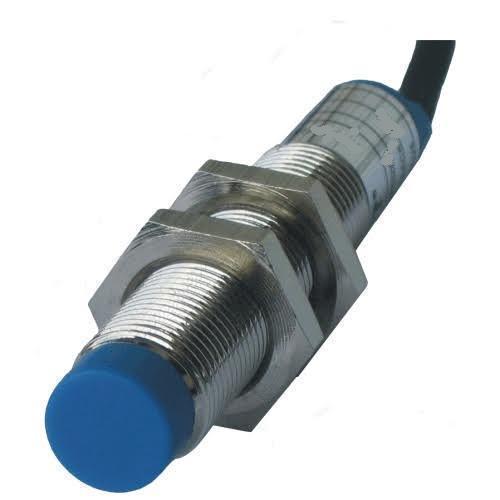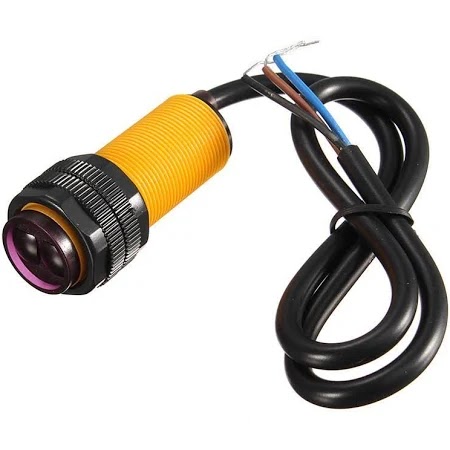Proximity sensors are devices which detect presence of objects near its boundaries or even if the objects are certain distance away from the sensors.
The key point to note is that they are non-contact type detectors thus they find a good use in industries. The term ‘proximity’ means nearness.
The proximity sensors come in a wide variety of shapes and sizes and they are classified according to the type of principle which they are use in order to detect.
Proximity Sensor Types
- Inductive Proximity Sensors
- Capacitive Proximity Sensor
- Optical Proximity Sensor
- Ultrasonic Proximity Sensor
1. Inductive Proximity Sensors:
They are used to detect metallic objects.
They operate on the principle of inductance.
The central components are coil and high frequency oscillator.
The alternating currents produce an electromotive force within the coil.
The oscillatory circuit is used to produce an electromagnetic field.
When a metallic object is brought near the sensor, eddy currents are generated on the surface of the object.
These eddy currents absorb some of the energy and thus the strength of the oscillatory field changes. This change confirms the presence of an object.
Advantages:
They have very high degree of accuracy, very high switching rate and can be used in harsher conditions.
Disadvantages:
Operating range is relatively limited and it detects only metallic objects.
2. Capacitive Proximity Sensor:
They are used to detect metallic as well as non-metallic objects including liquids and pastes.
They operate on the principle of capacitance.
The plate inside the sensor acts as one plate of the capacitor and the surface of the object to be detected acts as another plate of the detector.
The material medium between them acts as a dielectric.
The material medium is most commonly Air.
An electrostatic field is produced due to the sensor.
When the object comes closer to the sensor the capacitance increases and if the object moves away from the sensor then the capacitance decreases.
The changes in the oscillatory field are used to detect how far or how close the object is present with reference to the sensor.
Advantages:
They cost relatively less, have high speed and are quite stable. They are a good choice if power usage is an issue.
Disadvantages:
The accuracy is relatively less because they have complex design and they also get affected by change in temperature and humidity.
Optical Proximity Sensor:
They are used to detect the objects by using light beam.
The sensors are made up of light sensitive materials and there are two main parts to the sensors.
They have a transmitter and a receiver.
The transmitter is used to project light beam and the receivers serve the purpose to catch the light incoming to the sensor.
The transmitter projects or transmits light which strikes any object which comes in contact with the projected light.
The light is then reflected and the reflected hits the sensor back, when it happens the receiver catches or receives the light in order to detect how closer or how far away the object is present.
Advantages:
They have very wide range and they are immune to electric or magnetic influences.
Disadvantages:
They can get easily set off and they are relatively quite expensive. They can get affected by environmental effects like dust, rain, etc.
Ultrasonic Proximity Sensor:
They use ultrasonic sound waves; sound frequencies which are higher than the upper limit of the audible hearing range for humans.
The sensors also contain two main parts which are transmitter and receiver.
The transmitter emits ultrasonic sound and the sound waves hit the object.
Upon hitting the object some part of the sound wave gets reflected back.
The reflected sound waves are intercepted by the receiver and then based on this information it determines how far or how close the object is present.
Advantages:
They don’t get affected by environmental effects like dust, rain, etc and can also be used in very adverse conditions.
Disadvantages:
Sensing accuracies gets affected if the material is soft or if the temperature change is appreciable. It cannot work in vacuum or under water.







